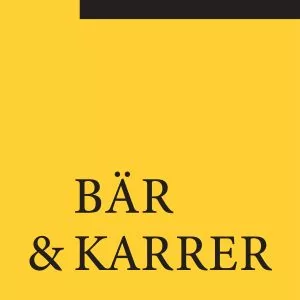- within Food, Drugs, Healthcare and Life Sciences topic(s)
- in Asia
- within Food, Drugs, Healthcare and Life Sciences topic(s)
- in Asia
- in Asia
- within Food, Drugs, Healthcare, Life Sciences, Privacy, Media, Telecoms, IT and Entertainment topic(s)
1. Life Sciences Regulatory Framework
1.1 Legislation and Regulation for Pharmaceuticals and Medical Devices
Swiss healthcare regulation is spread over various statutes, ordinances and guidelines, including self-regulatory instruments such as best practice codes and references to international provisions. This makes navigating the life sciences landscape depend in large part on legal and regulatory expertise, as well as extensive practical industry experience.
The following key acts provide the principles of the national regulation of pharmaceuticals and medical devices, whereby the legal terminology in Switzerland refers to "therapeutic products" as the generic term encompassing both "medicinal products" (pharmaceuticals) and "medical devices".
- Medicinal products – these are regulated by the Therapeutic Products Act (TPA), the Ordinance on Medicinal Products (OMP), the Medicinal Products Licensing Ordinance (MPLO), the Ordinance on the Requirements of Marketing Authorisation of Medicinal Products (OMAMP), the Ordinance on Medicinal Products Advertising (OMPA), and the Ordinance on Integrity and Transparency (OIT).
- Medical devices – these are regulated by the TPA, the Medical Devices Ordinance ("MedDO") and the Ordinance on In Vitro Diagnostic Medical Devices ("IvDO"). Switzerland recently revised its medical devices law to align it with Regulation (EU) 2017/745 on medical devices ("EU-MDR") and Regulation (EU) 2017/746 on in vitro diagnostic medical devices ("EU-IVDR").
Duties and responsibilities for Swiss healthcare are divided among the federal, cantonal and municipal authorities, whereas this Global Practice Guide focuses on the federal level. As part of the Federal Department of Home Affairs (FDHA), the Federal Office of Public Health (FOPH) is responsible for public health in Switzerland. The Swiss Agency for Therapeutic Products ("Swissmedic") is the Swiss authority responsible for the authorisation and supervision of therapeutic products. As a federal public law institution, Swissmedic is autonomous with regard to its organisation and management.
1.2 Challenging Decisions of Regulatory Bodies That Enforce Pharmaceuticals and Medical Devices Regulation
Administrative decisions of regulatory bodies are usually issued in the form of a ruling and can be challenged in administrative procedures or administrative court proceedings. The appropriate legal action depends on whether a federal or a cantonal regulatory body has issued the decision. If issued by a federal authority, decisions can be appealed to the Federal Administrative Court. Decisions of the Federal Administrative Court are subject to further appeal to the Federal Supreme Court.
These challenge procedures in general also apply to other regulated products. In certain areas, such as public procurement or social security, special provisions may apply. Besides, criminal procedure rules may apply to administrative and criminal sanctions issued by regulatory bodies.
1.3 Different Categories of Pharmaceuticals and Medical Devices
Medicinal products are divided into four dispensing categories:
- category A – medicinal products that may be dispensed on a one-time basis on a physician's prescription (Article 41 of the OMP);
- category B – medicinal products that require a prescription and can be obtained several times, whereby medicinal products on list B+ can also be dispensed without a prescription (Article 42 of the OMP);
- category D – medicinal products that may be dispensed without a prescription, but after specialist advice (Article 43 of the OMP); and
- category E – medicinal products that may be dispensed without a prescription and without specialist advice (Article 44 of the OMP).
The assignment to a particular category determines who is authorised to dispense, prescribe and use the medicinal product (Articles 24 et seq of the TPA). Non-prescription medicinal products, known as OTC medicinal products, are intended for self-medication. The classification into the different categories is made by Swissmedic (Article 23a of the TPA).
The TPA further contains special provisions for blood and blood products (Articles 34 et seq of the TPA) as well as for veterinary medicinal products (Articles 42 et seq of the TPA).
Medical devices are divided into different categories (classes I, IIa, IIb, III) – for which, different conformity assessment procedures apply. The classification follows the respective regulation in the EU-MDR (Article 16 paragraph 1 of the MedDO) and is based on the intended purpose and the associated risk. Certain medical devices may be classified as intended for use by healthcare professionals (HCPs) only.
2. Clinical Trials
2.1 Regulation of Clinical Trials
Clinical trials are mainly governed by the TPA, the Human Research Act (HRA), the Human Research Ordinance (HRO), the Clinical Trials Ordinance ("ClinO") and the Ordinance on Clinical Trials with Medical Devices ("ClinO-MD"). In principle, clinical trials with therapeutic products require prior authorisation from Swissmedic (Article 54 paragraph 1 of the TPA) and the competent ethics committee (Articles 24 et seq of the ClinO and Articles 9 et seq of the ClinO-MD). Regarding medicinal products, Swissmedic examines whether the good manufacturing practice (GMP) and safety requirements are met (Article 54 paragraph 4 lit a of the TPA). Regarding medical devices, the assessment includes the conformity of the products with the safety requirements (Article 54 paragraph 4 lit b of the TPA and Article 45 paragraphs 1 and 3 of the TPA).
Clinical trials must be conducted in line with the rules of good clinical practice as set out, with regard to medicinal products, in the International Council for Harmonisation (ICH) Guideline on Good Clinical Practice of 9 November 2016 and the World Medical Association (WMA) Declaration of Helsinki on Ethical Principles for Medical Research Involving Human Subjects (Article 5 paragraph 1 of the ClinO and Article 3 of the ClinO-MD). With regard to medical devices, the applicable rules on good clinical practice were incorporated into Swiss legislation by way of reference to Article 72 and Annex XV Chapters I and III of the EU-MDR, as well as in EN ISO 14155.
2.2 Procedure for Securing Authorisation to Undertake a Clinical Trial
In order to secure authorisation for the conduct of a clinical trial, the investigator must submit an application to the ethics committee in the canton in whose territory the study is conducted (Articles 24 et seq of the ClinO and Articles 10 et seq of the ClinO-MD). This is followed by:
- acknowledgment of receipt/possible deficiencies' notification within seven days (medicinal products) or ten days (medical devices); and
- decision within 30 days (medicinal products) or 40 (medical devices) days and information of Swissmedic in the event that an authorisation by Swissmedic is necessary – in case of multi-centre clinical trials with medicinal products, the deadline is extended to 45 days.
The submission of the application to Swissmedic is made by the sponsor – following which:
- acknowledgement of receipt/possible deficiencies' notification within seven (medicinal products) or ten (medical devices) days respectively;
- as a general rule, decision within 30 days (medicinal products) or 45 days (medical devices); and
- in certain circumstances, Swissmedic must obtain the opinions from the Swiss Expert Committee for Biosafety (SECB), the Federal Office for the Environment (FOEN) or the FOPH before granting the authorisation.
2.3 Public Availability of the Conduct of a Clinical Trial
Sponsors of authorised clinical trials with medicinal products are subject to registration obligations (Articles 64–67 of the ClinO). Before conducting a clinical trial with medicinal products, the sponsor must enter the clinical trial either in a primary register recognised by the World Health Organization (WHO) or in the register of the National Library of Medicine of the United States of America as well as in the supplementary Swiss federal (from March 2025: cantonal) database using a Swiss national language.
The publicly accessible portal SNCTP (Swiss National Clinical Trials Portal) displays studies that are being conducted in Switzerland as soon as they have been approved by the cantonal ethics committee and released for publication by the researchers. The data originates from the cross-cantonal application submission platform BASEC (Business Administration System for Ethics Committees) and the international study database International Clinical Trials Registry Platform (ICTRP) (WHO database comprising 17 worldwide primary registers).
The data listed in Annex 5 number 2.1 to 2.14 of the revised ClinO ("revClinO") will be made automatically accessible to the public at the latest within six months from the grant date of the trial authorisation (Article 64 paragraph 5 of the revClinO). This will include a brief description of the clinical trial, the site(s) where the clinical trial is conducted, the criteria for the participation in the clinical trial, the disease category, and the health condition investigated, as well as an indication of whether the clinical trial includes rare diseases.
The Registry of All Projects in Switzerland (RAPS) of the Swiss Association of Research Ethics Committees ("swissethics"), the umbrella organisation of cantonal ethics committees, also publishes clinical trials that have been approved by an ethics committee.
Sponsors of clinical trials must, in principle, register a summary of the results of the clinical trial in the respective trial registry (Article 64 paragraph 1 of the ClinO and Article 65a paragraph 1 of the revClinO), as well as a lay summary in the cantonal database within a year from completion or discontinuation of the trial (Article 65a paragraph 2 of the revClinO).
Sponsors of clinical trials of medical devices are subject to analogous registration obligations (Article 41 of the ClinO-MD).
Public access to the results of clinical trials of medical devices must be ensured by the sponsor by publication in one of the registries listed in Article 64 paragraph 1 of the ClinO (Article 42 of the ClinO-MD).
2.4 Restriction on Using Online Tools to Support Clinical Trials
Personal data held for research purposes must be protected by appropriate operational and organisational measures (cf Article 5 paragraph 1 of the HRO). The applicable ICH Guideline explicitly refers to the increasingly widespread use of electronic data handling and remote electronic trial data systems and outlines the additional requirements that must be met by the sponsor when using such tools (see Section 5.5.3 of the ICH Guideline for Good Clinical Practice E6(R2) of 9 November 2016). In addition, the use of online and electronic tools is subject to the limitations imposed by Swiss data protection law (in particular, the Federal Act on Data Protection (FADP) and the respective ordinance (Data Protection Ordinance, or DPO) – both of which have been completely revised as of 1 September 2023).
2.5 Use of Data Resulting From Clinical Trials
Health data is considered personal data requiring special protection. The HRA regulates in detail the further use and disclosure of health data that falls within its scope of application. In principle, the disclosure of health data is permissible both within an organisation and to third parties depending on the type of health data, the intended further use, and the assignability to a specific person. The data protection provisions do not apply to anonymised and pseudonymised data, insofar as the data subjects are no longer identifiable.
2.6 Databases Containing Personal or Sensitive Data
According to the HRA and its implementing provisions (Article 43 of the HRA and Article 5 of the HRO), anyone who stores biological material or health-related personal data for research purposes must take appropriate technical and organisational measures to prevent the unauthorised use thereof, and must fulfil certain operational and professional requirements.
Since 2016, the Declaration of Taipei on Ethical Considerations regarding Health Databases and Biobanks has complemented the Declaration of Helsinki.
3. Marketing Authorisations for Pharmaceuticals or Medical Devices
3.1 Product Classification: Pharmaceuticals or Medical Devices
The decisive criterion for the classification of a product as a therapeutic product (ie, as a medicinal product or as a medical device) is the intended purpose of the product, which – considering all objective (nature of a product) and subjective (designation and promotion of a product) circumstances of the individual case – must be the medical effect or application on the human organism.
As regards the distinction between medicinal products and medical devices, the decisive factor is not the material composition of the product, but whether its intended main effect in or on the human body is caused by pharmacological, immunological or metabolic means (medicinal products) or rather through mechanical, physical or physico-chemical effects (medical devices) (Article 4 paragraph 1 lit a and b of the TPA; BVGE C-2093/2006, E 3.5).
3.2 Granting a Marketing Authorisation for Biologic Medicinal Products
No specific requirements need to be met for the authorisation of biologic medicinal products (Article 2 paragraph 1 lit d of the Ordinance on the Simplified Marketing Authorisation Procedures (OSMA)). However, it is necessary that an equilateral black triangle standing on its apex is included in the package leaflet and information and is accompanied by the statement that this medicinal product is subject to additional monitoring (Article 14a paragraph 1 lit b of the OMAMP).
3.3 Period of Validity for Marketing Authorisation for Pharmaceuticals or Medical Devices
The authorisation of medicinal products is initially valid for a period of five years and is subject to subsequent renewal upon application (Article 16 paragraph 2 of the TPA and Article 16b paragraph 1 of the TPA). If a medicinal product is not placed on the market within three years of the granting of the authorisation, or if it is no longer actually on the market during a period of three consecutive years after it has been placed on the market, Swissmedic may revoke the authorisation (Article 16a paragraph 1 lit a of the TPA).
Medicinal products must fulfil their authorisation requirements for each production unit during the entire distribution period, whereby such requirements may only be modified, extended or restricted by a formal amendment procedure. Swissmedic may at any time review the authorisation, adapt it to changed circumstances, or revoke it (Article 16c of the TPA).
Regarding medical devices, the necessary certificates of conformity (see 3.4 Procedure for Obtaining a Marketing Authorisation for Pharmaceuticals and Medical Devices) are valid for a maximum of five years and are extended following a re-assessment (Article 26 of the MedDO). If a designated body finds that a manufacturer no longer fulfils the requirements of the MedDO, it must set a deadline for correction and otherwise suspend, revoke or restrict the certificate (Article 27 of the MedDO).
3.4 Procedure for Obtaining a Marketing Authorisation for Pharmaceuticals and Medical Devices
An authorisation to place medicinal products on the Swiss market is granted based on a respective application (Article 11 of the TPA) and after a detailed examination by Swissmedic. Applicants must hold a manufacturing, import or wholesale licence issued by Swissmedic (see 4. Manufacturing of Pharmaceuticals and Medical Devices), have a registered address, office or branch office in Switzerland, and must prove that the medicinal product is of high quality, safe and effective (Article 10 of the TPA).
Different authorisation procedures apply depending on the characteristics and the application of the medicinal product, as follows:
- ordinary procedures for first authorisations of new active pharmaceutical ingredients (APIs) and major deviations (Article 9 paragraph 1 of the TPA and Articles 11 et seq of the TPA);
- compassionate use authorisations of medicinal products (in a simplified procedure, Articles 14 et seq of the TPA) for a limited period – ie, for life-threatening or debilitating diseases – if the medicinal products are compatible with the protection of health, their use is expected to have a major therapeutic benefit, and no authorised, alternative or equivalent medicinal product is available in Switzerland (Article 9a of the TPA and Articles 18 et seq of the OSMA);
- fast track procedures for first authorisations of new APIs and major deviations on request, available for promising therapies for the prevention or treatment of a severe, debilitating or life-threatening disease where there is a high therapeutic benefit and where the standard treatment is either unavailable or unsatisfactory (Article 7 of the OMP) (see 4.1 Fast Track Registration Routes);
- simplified procedures for certain categories of medicinal products where this is compatible with the quality, safety and efficacy requirements and where there is no conflict with Swiss interests or international agreements – in particular, for generics (but not for biosimilars), orphan drugs, and certain categories of medicinal products authorised and/or used in foreign countries (Articles 14 et seq of the TPA and Articles 12 et seq of the OSMA); and
- the authorisation procedure on the basis of a notification – in particular, for certain complementary medicines without indications and other medicinal products with a low-risk potential (Article 15 of the TPA).
Changes to an authorisation that have no or only minimal consequences for the quality, safety or efficacy of a medicinal product must be communicated to Swissmedic within 12 months of their implementation (Article 21 of the OMP). Substantial variations require an additional marketing authorisation procedure. Marketing authorisations are in principle transferable upon approval of a respective application by Swissmedic.
Medical devices do not require an authorisation by a public authority prior to being placed on the Swiss market. Instead, they must bear a respective conformity (MD or CE) marking testifying the conformity of the device with the general safety and performance requirements.
The conformity assessment procedure is based on Articles 52 and 54 and Annexes IX-XI of the EU-MDR (Articles 21 et seq of the MedDO and Articles 17 et seq of the IvDO). Depending on the risk qualification of the medical device (see 1.3 Different Categories of Pharmaceuticals and Medical Devices), the conformity is either to be declared by the manufacturer or by a private body certified to conduct conformity assessments.
3.5 Access to Pharmaceuticals and Medical Devices Without Marketing Authorisations
In principle, ready-to-use medicinal products may only be placed on the market after they have been authorised (Article 9 paragraph 1 of the TPA). However, there are a number of exceptions to this general rule.
- Medicinal products for which a review of the ordinary approval requirements (safe, effective, and of high quality) is not necessary or useful – eg, formula magistralis, officinalis and hospitalis products or products intended for clinical trials – may be placed on the market before they have been authorised (Article 9 paragraphs 2 et seq of the TPA).
- Orphan use – the use of medicinal products for the treatment of diseases that are so rare that there is hardly any incentive for a regular marketing authorisation that may be approved in Switzerland for a limited period in a simplified approval procedure is permissible (Article 9a of the TPA and Article 14 paragraph 1 lit f TPA).
- Temporary authorisation for use outside of clinical trials – Swissmedic may temporarily authorise the use of as yet unauthorised medicinal products intended for clinical trials outside the scope of a clinical trial (Article 9b paragraph 1 of the TPA and Articles 52 et seq of the MPLO).
- Temporary authorisation to bridge temporary unavailability – medicinal products may be temporarily or quantitatively authorised by Swissmedic to bridge the unavailability of an identical medicinal product in Switzerland, provided that they are authorised in another country with an equivalent medicinal product control and no essentially identical medicinal product is authorised and available in Switzerland (Article 9b paragraph 2 of the TPA).
- Off-label use (eg, the use of a (properly) authorised medicinal product for other indications) is generally permissible within the scope of Articles 3 and 26 of the TPA.
- Unlicensed use – an unlicensed medicinal product may be imported under the restrictive requirements of Article 20 paragraph 2 of the TPA and Articles 48 et seq of the MPLO.
Manufacturers of medical devices must generally carry out a conformity assessment before placing the device on the market (see 3.4 Procedure for Obtaining a Marketing Authorisation for Pharmaceuticals and Medical Devices). However, in the interest of public health or patient safety or health, Swissmedic may – upon application – grant an authorisation even though the relevant conformity assessment procedure has not been carried out (Article 22 paragraph 1 of the MedDO and Article 18 paragraph 1 of the IvDO).
3.6 Marketing Authorisations for Pharmaceuticals and Medical Devices: Ongoing Obligations
Holders of marketing authorisations for medicinal products, as well as medical device manufacturers, must have a post-market surveillance system (ie, pharmacovigilance and materiovigilance plans) in place (Article 11 paragraph 2 lit a no 5 of the TPA, Article 56 of the MedDO, and Article 49 of the IvDO).
Holders of marketing authorisations for medicinal products with a new API or a biosimilar must automatically file periodic safety update reports (PSURs) with Swissmedic on the safety and risk-benefit ratio for four years after authorisation (Article 60 of the OMP). With its marketing authorisation, Swissmedic may impose additional conditions or obligations on the applicant, including further product evaluations (eg, in Phase IV clinical trials). Depending on the classification of a medical device, its manufacturer has similar trend report, periodic summary report and PSUR obligations to the designated body involved in the conformity assessment (Articles 59 et seq of the MedDO and Articles 52 et seq of the IvDO).
As for incident notification requirements, manufacturers of medicinal products, distributors of ready-to-use medicinal products, and HCPs must notify Swissmedic of adverse events, adverse drug reactions, and quality defects within 15 days in the event of serious adverse reactions and within 60 days in the event of non-serious reactions. Similarly, anyone placing medical devices on the Swiss market must report to Swissmedic all serious incidents as well as all field safety corrective actions that are undertaken in Switzerland (Article 66 of the MedDO and Article 59 of the IvDO).
To view the full article, click here.
Originally published by Chambers.com.
The content of this article is intended to provide a general guide to the subject matter. Specialist advice should be sought about your specific circumstances.
[View Source]





